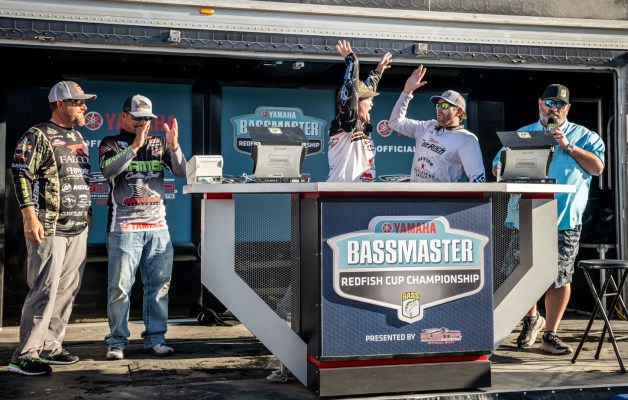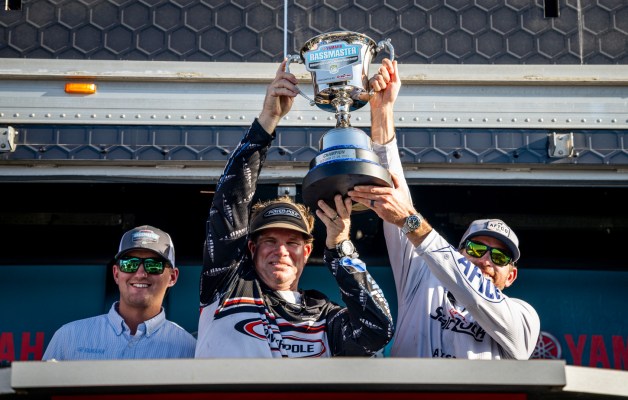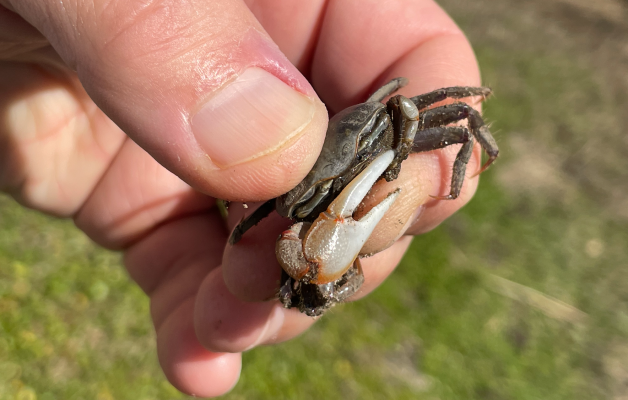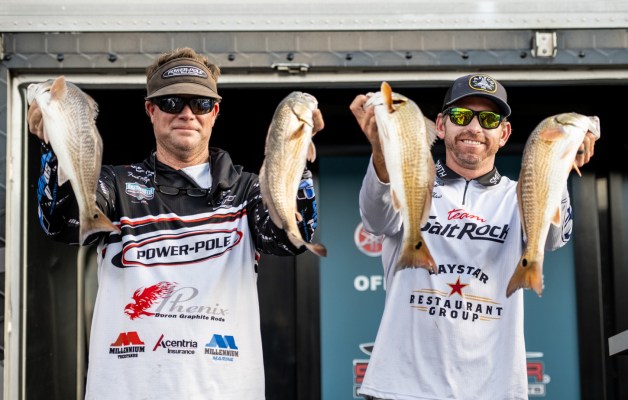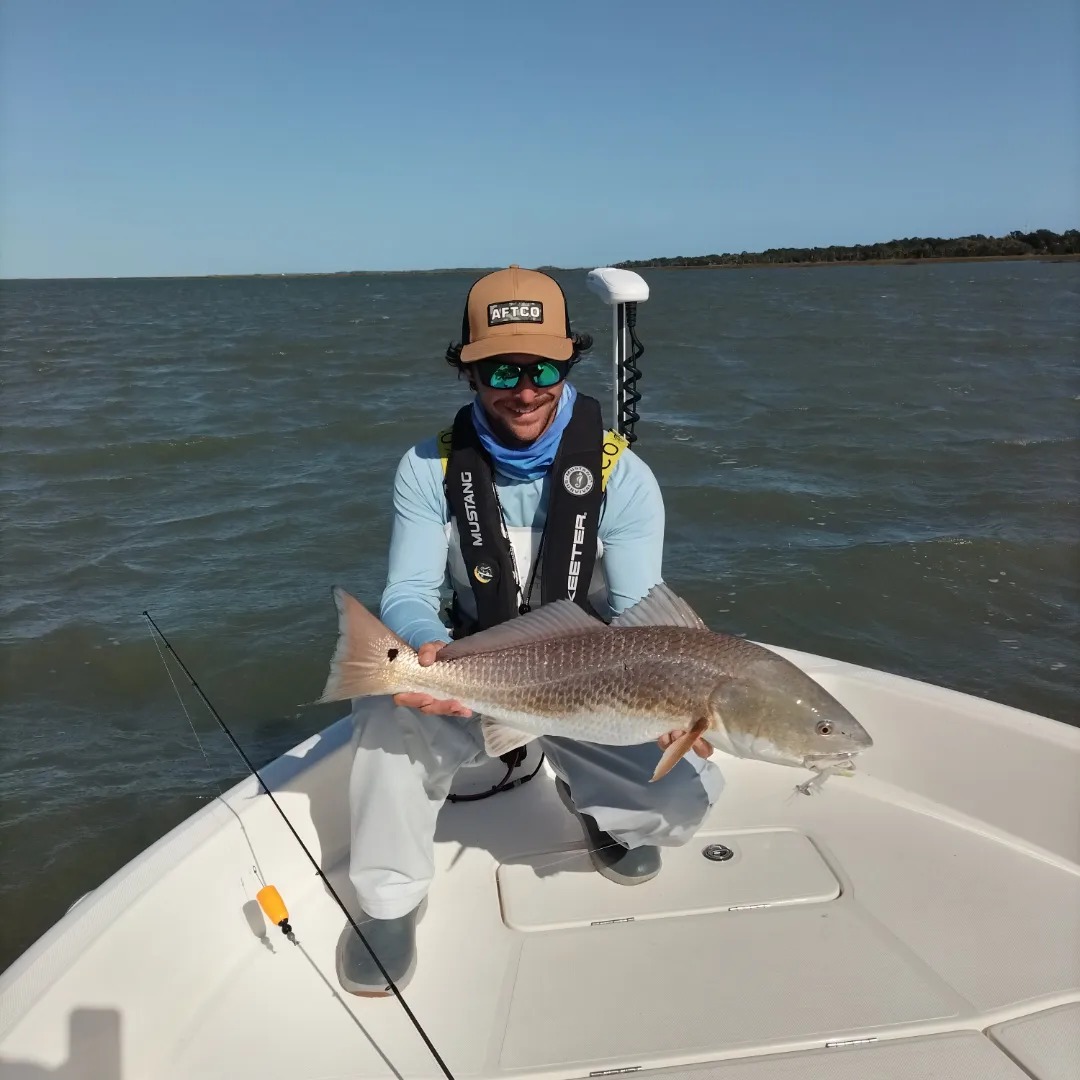
As the Yamaha Bassmaster Redfish Cup Championship presented by Skeeter Boats gets underway, 20 redfish anglers will be looking for the right bite. Along the way, they’ll have to consider the impact of one particular bight — and no, that was not a typo.
A bight is a coastal recess; an inward dip. Also known as the South Atlantic Bight, the Georgia Bight, which extends from Cape Hatteras, N.C. to Cape Canaveral, Fla., draws the tide deeper into the coastline than areas north and south. The result is a huge tidal swing — upwards of 6-8 feet (as compared to the 1 1/2 foot tides this event saw the past two years at Port Aransas, Texas).
Sure, this is not the Bay of Fundy’s 38-foot tidal sledge hammer, but in terms of redfish pursuits, Winyah Bay’s location in the upper half of the Georgia Bight creates daily tidal swings meriting “no joke” status.
“On average, we have about a 5 1/2-foot tidal swing,” said local pro Capt. Ben Powers, who guides the Charleston, S.C. area, just below the tournament’s southern boundary. “We have two high tides and two low tides a day, so on average, you have almost a foot of water moving an hour.”
This week’s tides will be right around that average, depending on location throughout tournament waters. Big tides bring a mix of opportunity and hazards, so this will surely factor into the tournament’s daily drama.
What it does
“When we get these really big high tides, the fish are going to be more spread out, they’re going to be back in the marsh grass and they’re going to be a little tougher to get to,” Powers said. “Also, with these big tide swings, the fish are always on the move, so we find it a little tougher to stay on them.
“The fish aren’t staying in one area too long because when the water’s receding, they have to get out of there. You’ll see a lot of fish on the move and you have to stay on them without pressuring them too hard. Finding that balance is the key.”
As Powers explained, such balance hinges on stealthy approaches and long casts. On its face, this statement makes sense, as general fishing logic goes. However, taken with a good dose of local insight, it resonates even deeper.
“Our bottlenose dolphin population here is very high, so they put a lot of pressure on the redfish,” Powers said. “You’ll see dolphins on the flats and on the main banks of the river tearing up those schools of redfish.
“When your boat’s moving in there, that correlates to a dolphin attack. So you have to keep that distance to allow the redfish to feel comfortable.”
The tidal trap
Now, if tides fall far enough to force redfish evacuation, what do you think that means for Skeeter bay boats with two anglers and a cameraperson? Many teams will poke into marsh creeks, but that show comes with a time limit.
“You need to be out of those creeks before you get trapped in them,” said Louisiana redfish pro Dwayne Eschete, who competed the 2021 Redfish Cup Championship and fishes this year’s event with Elite pro Drew Cook. “I think that could play a big role in this event. We could have the guys who are leading get stuck in a creek and lose the tournament.”
Powers agrees: “You could find yourself in a serious pinch where you cannot make weigh in. So, when the water starts to get shallow, you have to get on your way out.
“It doesn’t hurt to have a push pole, but the trolling motor helps a ton. When it’s time to get out of a creek, you’re usually done with that school of fish, so you don’t have to worry about making noise. You put (the prop) just below the surface of the water and let the big dog eat.”
Good advise, but here’s the kicker: Tidal carving is an imperfect art that often leaves a surprises at the most inopportune places.
“You have to remember that there could be a shallower area on the way out and that could be shallow than where you are,” Powers said.
No question, marsh creeks can hold the kind of redfish bounty that justifies the strict timing awareness. Get it right and you like a genius. Blow the timing and you’re gonna spend about 6 hours in the marsh with enormous green head horseflies that beat up fiddler crabs for fun. (I don’t know if horse flies actually do that, but they’re mean — they’re really mean.)
And if you consider getting out and pushing an option, know that the South Carolina marshes are lined with pluff mud — basically, a dark, sticky oatmeal that’ll quickly ensnare an adult to serious peril. Add to this blade-like oyster shells and, well… just stay in the boat.
Tidal tidbits
A few notable points on those Georgia Bite tides:
All together: While high tides scatter fish, falling tides concentrate the action by pulling bait and predators out of marshes and other hidey holes and piling them into main channel scenarios. Redfish still have plenty of open water in which to travel, but these fish are driven by nearly perpetual appetites, so they tend to gang up in feeding areas with sustainable depths.
The big reveal: While high tides open doors, low tides pull back the curtains to reveal key features like oyster bars, rocks, and most importantly — drains. Finding specifically where the water funnels into and out of the marsh provides key targeting reference.
Run and gun: Even with its significant tidal swings, Winyah Bay redfishing offers plenty of opportunity to “run the tide” — moving up or down the tidal plane to stay with a particular stage of rising or falling water.
Bassmaster Elite Scott Canterbury, who pairs with Florida redfish guide Krista Miller, is new to redfishing, but he’s well-versed in tidal fishing. Placing second in the 2019 Elite event at Winyah Bay, Canterbury leveraged water fluctuations to his advantage — a strategy he’s hoping to replicate for the week’s redfish search.
“The tides definitely made a difference for me (in the Elite event), fishing the first hour of the outgoing and the first hour of the incoming seemed to be the deal,” Canterbury said. “I think that’s a big deal for these redfish as well.
“In that (Elite) tournament, I was able to run a few places that were better when I knew the tide was moving. Hopefully, we’re going to be able to do that this week. The key with any tidal fishery is being able to time the tide and stay ahead of it.”
Canterbury said he and Miller had located some areas with fish in them and a handful of catches provided critical details that will give them, at least, a starting agenda.
“We have some specific spots we want to hit and maybe rotate through them a couple times throughout the day and hopefully hit them at the right time,” Canterbury said. “Every time we would get a bite in practice, Krista was really big on knowing exactly what the tide was and what time of day it was. I think this is going to be key.”
Play the game their way: Every competitor knows that redfish are going to eat as often as they can, but figuring out when the windows of opportunity will open requires a deep analysis of a vast fishery overlaid with big Georgia Bight tides.
Eschete said it best with his no-nonsense perspective: “We’ve been trying to target areas with eddies where we would think the fish would want to be out of the current. How many of these fish actually want to be fighting this (big tide) current every day?
“But then again, these fish live here; they do this every day, twice a day. They’re used to it, so we have to think more like the fish. There’s an old saying: ‘We have to catch the fish where they want to be, not where we want them to be.’”


